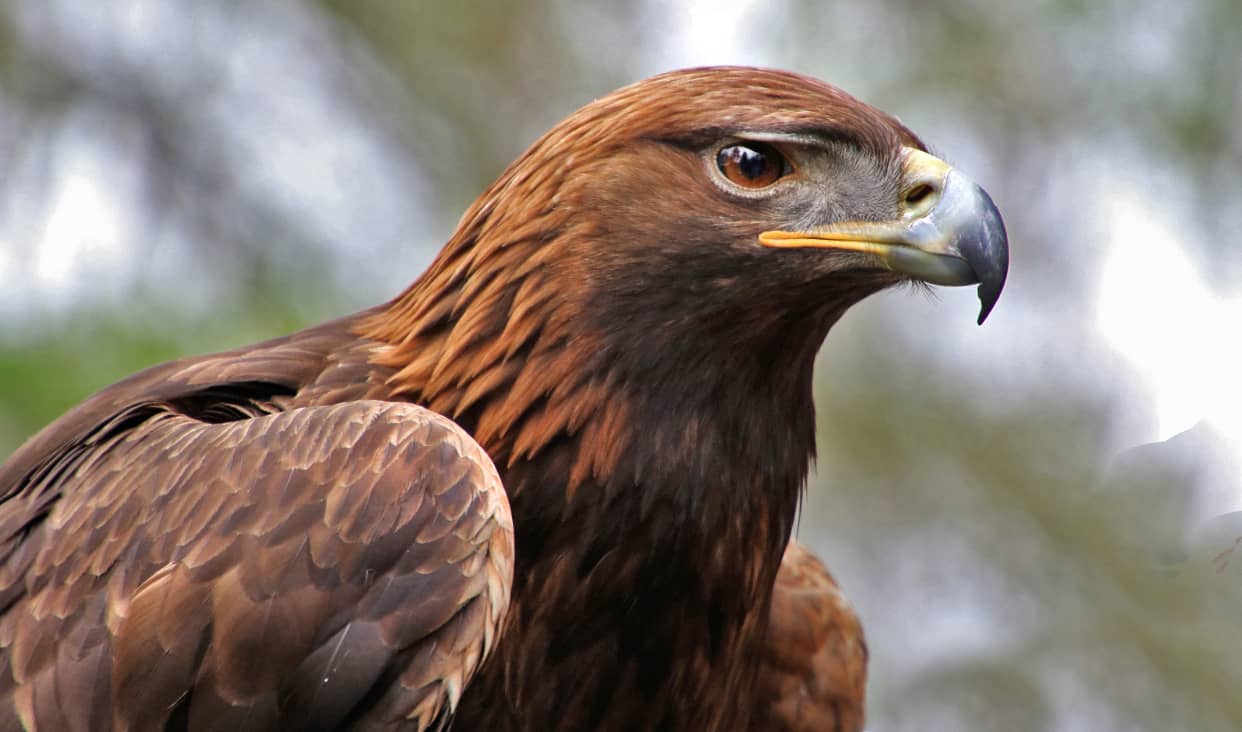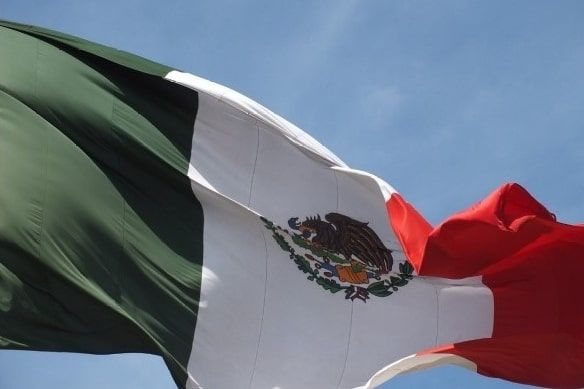The golden eagle, an emblematic bird of Mexico
Not only does the golden eagle (Aquila chrysaetos) represent a national symbol, but it also plays a very important ecological role, contributing to the health of ecosystems.

The golden eagle (Aquila chrysaetos), in addition to representing a national symbol, plays a very important ecological role in contributing to the health of ecosystems. The image of this bird of prey, weighing up to six kilos and with a wingspan of more than two meters, is considered by the ancient inhabitants to be the supreme eagle or golden eagle.
Its dark brown plumage with golden color on the neck and shoulders, poses in the center of our national flag, and in the Mexican collective unconscious; its honey-colored eyes reflect the intelligence and sharpness in its dizzying flight of 240 km/h to capture hares, rabbits, prairie dogs and other small mammals. Hence its ecological importance in regulating the populations of its prey and being an "umbrella" species, its protection leads to the conservation of the fauna and flora that exist in its habitat.
Because of its physical characteristics and skills, the golden eagle occupies a preferential place among the most appreciated fauna: restless honey-colored eyes with sharp and intelligent gaze that locate its prey from high above: hares, rabbits, prairie dogs and other small mammals, as well as snakes, birds, and even insects, which it catches in its dizzying flight of 240 km/h (150 mph).
Golden eagles fly over hills near valleys, slopes, ravines and grasslands in arid, semi-arid and mountainous areas with temperate forests, deserts and grasslands of Baja California, Sonora, Chihuahua, Coahuila, Mexico, Chihuahua, Coahuila, Nuevo León, Tamaulipas, Sinaloa, Nayarit, Durango, Jalisco, Aguascalientes, Zacatecas, San Luis Potosí, Querétaro, Guanajuato and Oaxaca, where they nest in the highest parts of the mountains.
Currently, the National Commission of Natural Protected Areas has 174 breeding pairs registered, which represents a significant increase in the registration of the population of these birds for the country compared to 2010, when only 70 breeding pairs and 117 nests were registered. There are records of the species in 31 Natural Protected Areas in Mexico.
Nevertheless, the golden eagle remains in the endangered category because its population is in danger of disappearing in the short or medium term if the negative factors of its viability persist: the modification and loss of its habitat, poaching, illegal collection of eggs and specimens, and the electrocution of eagles in power lines. Conserving this magnificent and emblematic bird is everyone's responsibility, so on National Golden Eagle Day it is necessary to raise awareness of the risk to which this threatened bird, which contributes greatly to conservation, is subjected.

The golden eagle, a symbol of national identity
The symbol of the flag emerged in 1821, during the end of the independence struggle, with the purpose of creating an emblem in which its colors, white, green and red, respectively, would represent religion, independence and the union of Mexicans. The current design of the shield is the work of the artist Francisco Eppens Helguera and, surely, you have seen it on coins, medals, documents and official stamps.
Currently, we identify the flag by stripes placed vertically and ordered as follows: green, white and red. In the center is the National Coat of Arms, a symbol showing a golden eagle in profile, in combat attitude, with its left claw resting on a cactus supported by a rock that emerges from a lake, while its right claw and beak hold a snake. The scene is crowned with an oak branch and a laurel branch, joined by a tricolor ribbon at the bottom.
There are different species with their respective meanings that are reflected in the National Coat of Arms, today we want to highlight the importance of one of them, the golden eagle, known by its scientific name as Aquila chrysaetos, which symbolizes the Mexican's brave character, strength, light and goodness. Sacred bird of pre-Hispanic Mexico and representation of the god Huitzilopochtli for the Mexica (God of war).
This species is also related to the sun, being the bird that flies at a great height and for its ability to soar above the clouds in a serene and majestic way. It travels in circles, where its normal flight ranges from 65 to 90 km, but it is capable of reaching speeds of up to 200 km ( 124 miles) per hour when it swoops when it sees prey, when it plays or in its courtship flights.
It is a powerful animal that represents strength and precision, due to the sharpness of its vision, since it can see its prey up to 2 kilometers ( 1.2 miles) away. It is characterized by a life span of 30 to 35 years. It has dark brown plumage with golden tones, and when its wings are extended, it delimits the four cosmic directions, reaching a length of more than two meters. With a length from beak to tail between 80 and 90 cm ( 26 to 28 inches) and a weight of up to 6 kilos (20 to 20 pounds). Its voice, a loud cry that is rarely heard.
The connotation of the golden eagle is of strength, power, dominance over others, warrior character, aggressiveness and bravery. During the War of Independence, this species was used in different banners, signifying the yearning for freedom. From the front, right and left profile, with the imperial crown, until finally, with the triumph of the Revolution, the indigenous origin of its representation was rescued.
Since pre-Hispanic times, the golden eagle has been part of mythology and has flown through history, acquiring profound cultural relevance and great ecological importance, as it favors the conservation of the biodiversity of the areas it inhabits in Mexico.




